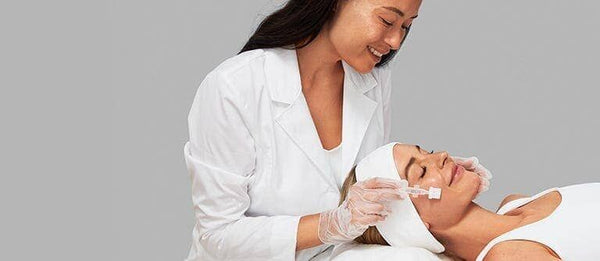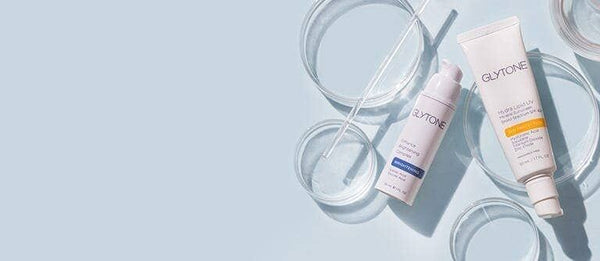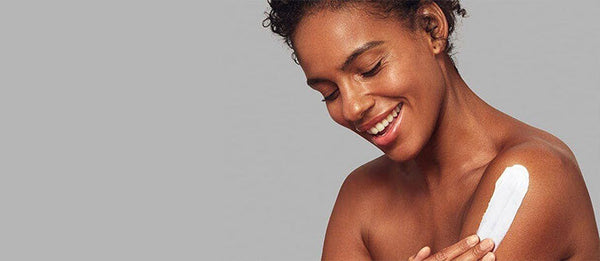What is KP and How to Treat It?
Keratosis Pilaris (KP) is a common, harmless skin condition. Many often refer to KP as "chicken skin" because the skin looks like the skin has permanent goosebumps. These skin bumps may appear on the arms, cheeks, thighs, and buttocks. KP can be stubborn, but there are ways to help treat it.

The Basics: What Causes Keratosis Pilaris?
- Keratin is a protein that helps protect the skin and causes blockage within the pores.
- The blockage of the pores creates rough, bumpy skin.
- Most commonly in patients with Atopic Dermatitis, Asthma, Ichthyosis Vulgaris, Hypothyroidism, Cushing's Syndrome, Diabetes, Down Syndrome, and Obesity
- A common, autosomal-dominant, genetic condition.
- KP is mainly found in the arm area; the most treatment-resistant area is the legs.
- KP found on the face is the most challenging area to treat because the skin is thinner and more delicate.
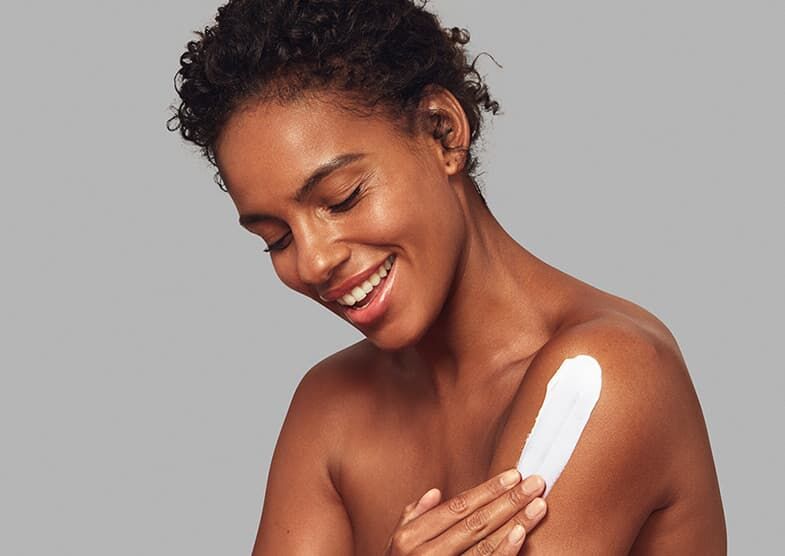
Tips on How to Treat KP:
If you commonly treat dry skin, KP flare-ups will likely improve as well. Simple tips on how to treat dry skin and what products to use:
- Short, Lukewarm Baths or Showers - Baths or showers should be limited to less than 15 minutes. Hot water can worsen dry skin by increasing water loss and dehydration.
- Gentle Cleansers - Harsh soap can worsen dry skin and other skin conditions. Stick to a gentle cream cleanser formulated with active acids.
-
Daily Moisturizers - Proper skin hydration can help improve the appearance of KP. Moisturizers help alleviate dry, rough areas by softening them and making them less noticeable.
- Most moisturizers lock in moisture with petroleum jelly to keep the skin properly hydrated.
- Hyaluronic Acid and Glycerin draw moisture into the skin from the environment to hydrate the skin (humectants).
- Use a Humidifier - Humidity helps improve dry skin and ultimately KP, which is why KP worsens in the winter. Moisture in the air keeps the skin hydrated.
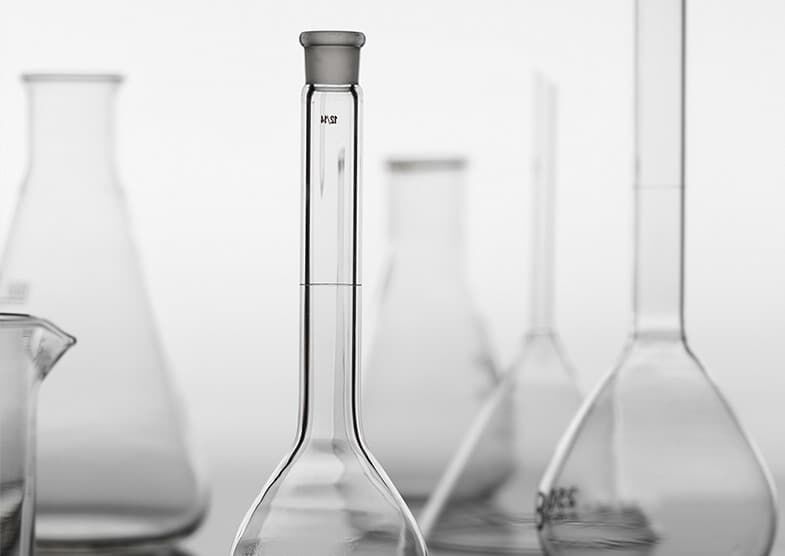
Treatment Options for KP:
- In-Office Chemical Peels - Chemical Peels can help exfoliate the keratin plugs stuck in the hair follicles and alleviate the signs of KP. They help smooth the skin and make it feel softer and look more radiant. The best peel ingredients for KP are Glycolic Acid, Lactic Acid and Salicylic Acid.
- Exfoliation - Chemical or physical exfoliators are the foundation for keratosis pilaris treatment. It is important not to over-exfoliate as that will worsen your KP. Like microbeads and brushes, physical exfoliators tend to be more irritating. Chemical exfoliators tend to be safer, especially for novices. Glycolic Acid, Lactic Acid and Salicylic Acid work best to improve KP.
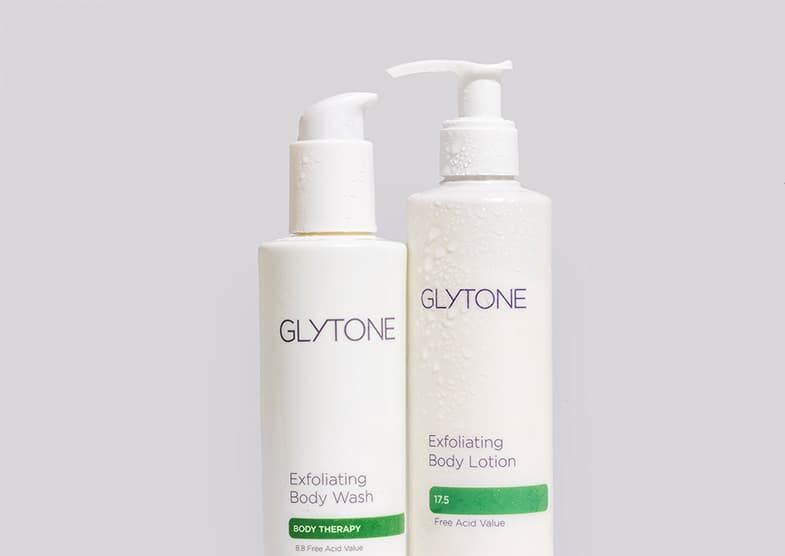
Body Therapy: Cleanse & Moisturize
The KP Kit combines two innovative, effective products that turn bumpy, dry skin into smooth, radiant skin. This duo delivers powerful cleansing and moisturizing benefits and are safe to use daily.
Exfoliating Body Wash
- Formulated with Glycolic Acid to exfoliate the skin.
- Glycerin is a humectant moisturizer that pulls moisture from the environment into your skin to hydrate. It's also an emollient that softens the skin and improves the barrier function to prevent irritation.
Exfoliating Body Lotion
- After cleansing, apply Exfoliating Body Lotion.
- Formulated with Glycolic Acid and Glycerin to exfoliate and hydrate the skin, while Allantoin soothes and nourishes the skin.
Resurfacing Body Oil
Resurfacing Body Oil is an effective AHA body oil that can treat KP. It is safe to use daily as tolerated. Nourishing oils are combined with the exfoliating power of AHA Proactive Glycolic Acid and hydrating botanicals, including:
- Agave Tequilana Leaf Extract stimulates Hyaluronic Acid production in your skin to plump and hydrate the skin. It can also calm irritated skin since it contains anti-inflammatory properties.
- Papaya fruit extract contains an enzyme (papain) that helps gently exfoliate dead skin cells. It also has anti-inflammatory properties to soothe the skin.

Body Therapy: Protect
DAILY BODY LOTION BROAD SPECTRUM SPF 15 combines the Glycolic Acid with SPF to protect your skin from the sun's harmful UV rays.
- Glycolic Acid removes dead skin cells and debris from the skin.
- Sunscreen should be applied after Glycolic Acid because it removes the top protective layer of the skin, making it easier for the sun to penetrate and damage your skin.
- This exfoliating body lotion is formulated with Shea Butter to hydrate and moisturize the skin. Shea Butter also contains anti-inflammatory properties to soothe the skin.
- Powerful antioxidant Vitamin E protects the skin from free radical damage caused by the sun. Free radicals are what destroy our collagen and elastin to give us wrinkles and sagging skin.

When To Talk To Your Dermatologist
- If you are unsure of your diagnosis of KP, see your dermatologist. Other types of rashes can mimic KP.
- When over-the-counter treatments are not working.
- Experiencing irritation or redness from the treatments.
- Severe pain or itching with KP.
References
1. Baumann L (ed) 2015. Cosmeceuticals and Cosmetic Ingredients. McGraw-Hill Education, NY.
2. Bolognia, J, Jorizzo JL, Schaffer, JV. (2012). Dermatology. Philadelphia: Elsevier Saunders.
3. Draelos ZD (ed) 2005. Cosmeceuticals. Elsevier Inc, NY.
4. Gutiérrez-Hernández, José Manuel et al. “Use of Agave tequilana-lignin and zinc oxide nanoparticles for skin photoprotection.” Journal of photochemistry and photobiology. B, Biology vol. 163 (2016): 156-61.
5. www.glytone.com

